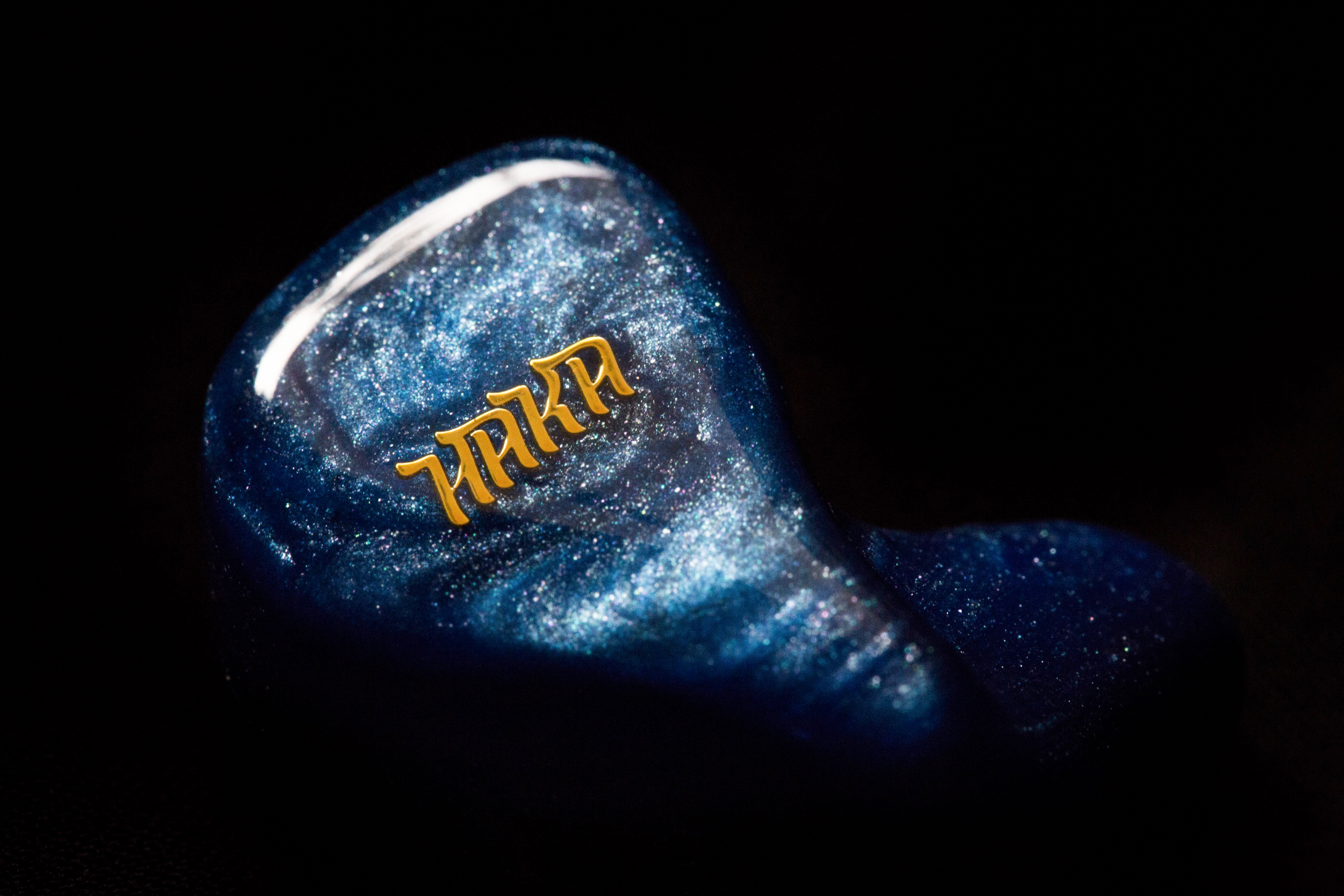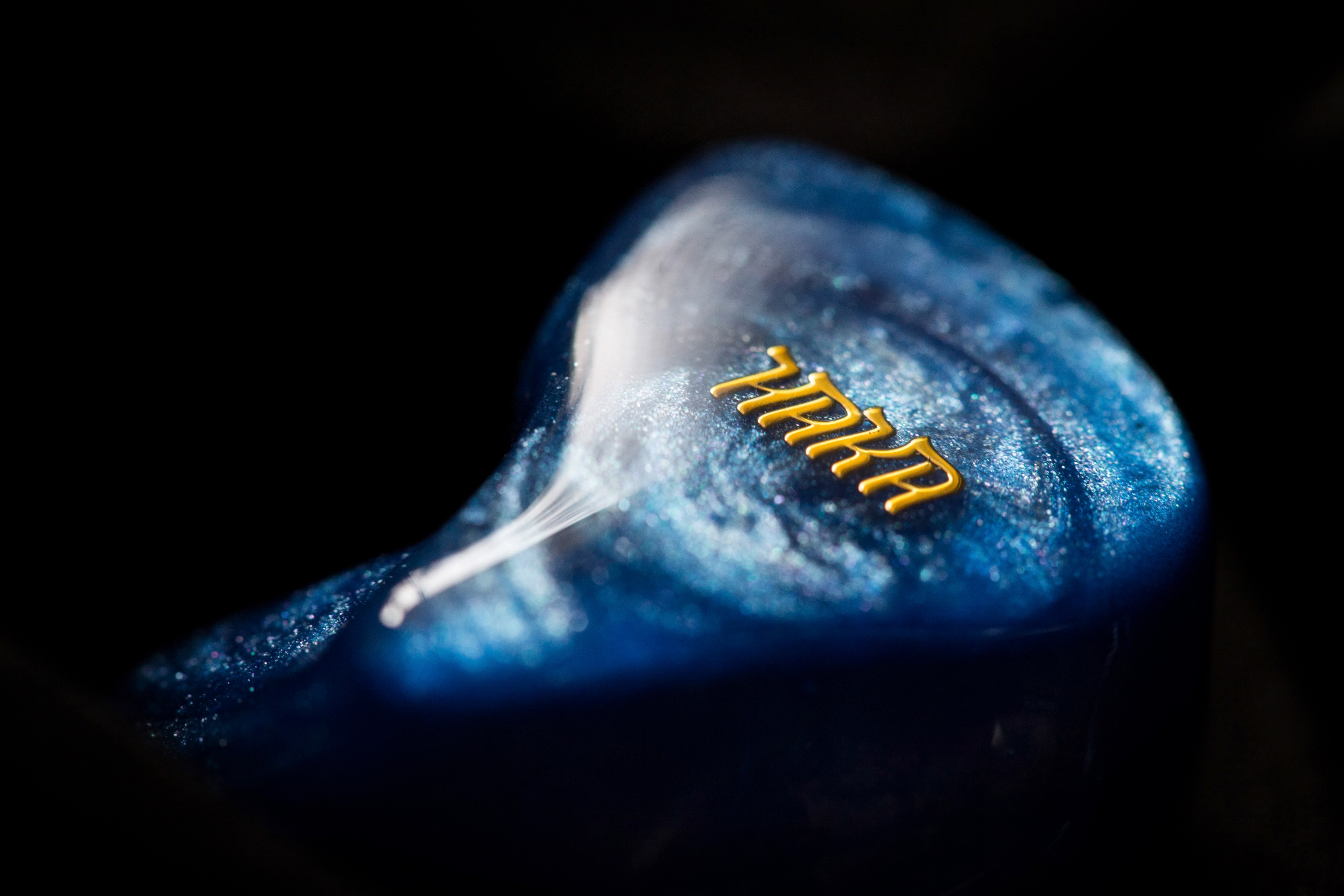Presentation
The Jomo Audio Haka sports a well-balanced, versatile and musically-engaging signature. With its sans-crossover, single-driver configuration, Joseph aimed to achieve a forgiving yet capable signature, and he’s certainly succeeded here. Apart from moderate lifts along the sub-bass and lower-treble, the Haka maintains impressive linearity. This superb coherence – paired with the Haka’s admirable top-end extension – is responsible for the monitor’s outstandingly black background. It’s unquestionably one of the most stable foundations I’ve ever encountered within this price range, and it does wonders for the Haka’s technical performance. The in-ear gains tons of natural headroom through sheer (linear) extension alone, so instruments maintain a sense of crackle and pop despite the monitor’s lush and laid-back presentation. Like I mentioned previously, a slight bass bias does exist here, but it’s tastefully done for the sake of fun.

The Haka constructs a natural, cube-like image; even in width, depth and height. Additionally, it maintains Jomo Audio’s knack for excellent precision by using a familiar set of ingredients: Neutral notes, a stable stage and swift decay. Like the Samba and the Flamenco, the Haka exhibits an above-average sense of speed. Where it differs is in treble articulation. The Haka neither sparkles nor bites like its bigger brothers; favouring a linear treble until roll-off. As a result, its average note size may come across as timid, but it has the advantage of sounding smoother, more forgiving and more natural than either of its siblings. Plus, the Haka’s neutral vocal placement greatly boosts depth, tip-toeing between expansion and recession with admirable success. Instrument separation is impressive, even if a small amount of texture was sacrificed for smoothness and tone. But, at the end of the day, the Haka still manages an honourable balance between tact and musicality; compensating its lack of bite with immense speed, whilst maintaining realism throughout.
Bass
The Haka’s low-end is noticeably sub-bass-inclined. Although mainstream pieces generally prefer a fuller bottom, the Haka has forgone this for an emphasis on control and definition. Impact is still satisfying – generally above average – but more noticeable is how tight these punches are, as well as the air that surrounds each note. As a result, the Haka’s low-end achieves great clarity and a neutral-erring tone. The mid-bass region is more relaxed by comparison, which helps maintain a clean stage. Also responsible for this is the low-end’s impressive pace. Swift transient response further boosts the monitor’s dynamic energy, and its short decay maintains a pitch-black background. Though, bassheads may find themselves underwhelmed by the more foundational nature of the low-end, rather than pure, unbridled slams. But, the bass’s agility and texture renders it versatile and genre-agnostic; unprecedented in the entry level.
Give-and-take aside, the Haka’s clearest achievement is extension. Jomo Audio’s proprietary driver outputs impressive amounts of sub-bass rumble, successfully establishing the in-ear’s rhythmic foundation. Again, the rise is modest and quick, so don’t expect any skull-rattling to occur. But, the Haka still displays great physicality, leading to emotionally-satisfying cadences when listening to genres like pop, EDM or metal – all without losing an ounce of finesse. Additionally, this energy contributes slightly to vocal body in place of the mid-bass and the lower-midrange. Low-end coherence and timbre are the last to benefit from this. Upright basses and kick drums consistently sound rounded and clear, due to the linearity maintained from transience to decay. Some may notice a slight lack of bloom, but that would’ve been one compromise too many for the Haka’s balanced delivery; a work-and-play dynamic infused with skill, organicity and fun.
Midrange
The Haka begins with a lower-midrange dip. Because of a valley spanning around 500 to 1,000Hz, the Haka delivers vocals with impressive cleanliness, clarity and precision. This endows instruments with a light, wispy and feathered quality, but they never come across anaemic or thin. Again, the Haka’s solid, energetic sub-bass injects trace amounts of body and warmth into the midrange. This attenuated region also creates an impressive amount of space around lead instruments. But, thankfully, a rise in the presence region (around 2-3kHz) prevents them from sounding diffuse or distant. The result is a seductive, alluring midrange with a mindful balance between emotional resonance and finesse. Enthusiasts with a true love for singer-oriented tracks may take issue with the Haka’s lack of intimacy and note size, but its current tuning benefits versatility, because of a universally-beneficial emphasis on space and speed.

The Haka’s lush-yet-roomy tuning inherently strays away from the bombastic, big band, wall-of-sound-esque signatures exemplified by the Lime Ears Aether or the Vision Ears VE8. But on the other hand, this contributes to its relaxing ambience; ideal for extended listening. The Haka dips once again around 4kHz, before rising in the lower-treble. These shifts make sure the monitor retains vibrancy and edge, but they’re also crucial in maximising versatility. The dip ensures the Haka is always stridence-free, while the following rise aids contrast in articulation. In terms of timbre, the Haka remains impressively natural too. Despite a neutral mid-bass, the monitor’s linear upper-treble imbues great organicity into the midrange. Again, playing into the Haka’s buttery nature, instruments truly impress in skill and tone. Although there’s room for improvement as far as harmonic detail and texture are concerned, the Haka’s midrange is a role model in the sub-$500 market; favouring tonal accuracy, effortless resolution, versatility and air.
Treble
As mentioned, the Haka employs a lower-treble peak to provide clarity and articulation. It resides somewhere around 6kHz, giving instruments an airy and tizzy edge. An earlier rise would’ve given the Haka better solidity (when reproducing hi-hats, vocal vibratos, etc.), but on the other hand, poorer recordings could’ve run the risk of sounding brittle as well. Jomo Audio clearly settled on a rise with versatility in mind, continuing the Haka’s congruent theme. This feeds into the wispy, ethereal quality present in the midrange; pairing ample headroom with smooth, effortless and clear delivery. It establishes the Haka’s natural spin on transparency (not dissimilar from IEMs like the Warbler Prelude or the Empire Ears Phantom) where linearity and coherence reign supreme. Finally, a familiar element – speed – returns to aid the Haka’s sense of attack; treble notes appearing like warm feathers to the ear before vanishing without a trace.
The lower-treble is where the Haka peaks last. My church’s slow-rock rendition of Have Yourself A Merry Little Christmas – which I recorded live, mixed and mastered – particularly lacks the high-frequency hiss present in the piano channel; indicative of a 10-12kHz dive. However, the track still maintains admirable left-right separation (especially considering the four guitars panned throughout the stage) and an impressive centre image. I imagine this is due to the single-driver’s immunity against phasing and it plays into the solo star nature of the Haka’s vocal presentation. The calm upper-treble proves detrimental, though, in texture and friction. In instruments like guitars and violins, the Haka ever-so-slightly smears the pluck of a string or the pull of a bow. But on the bright side, this aids organicity. The reverb-like liquidity naturalises instruments, so neither the lower-midrange dip nor the lower-treble lift come across as artificial or hollow. Plus, the former allows the Haka to retain adequate separation and stability, even with its relaxed top-end.



